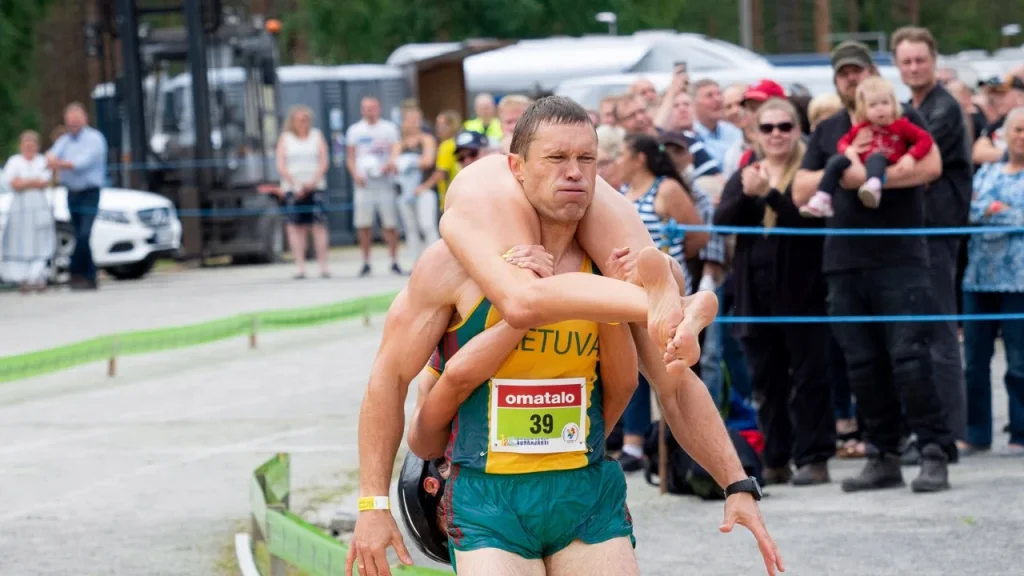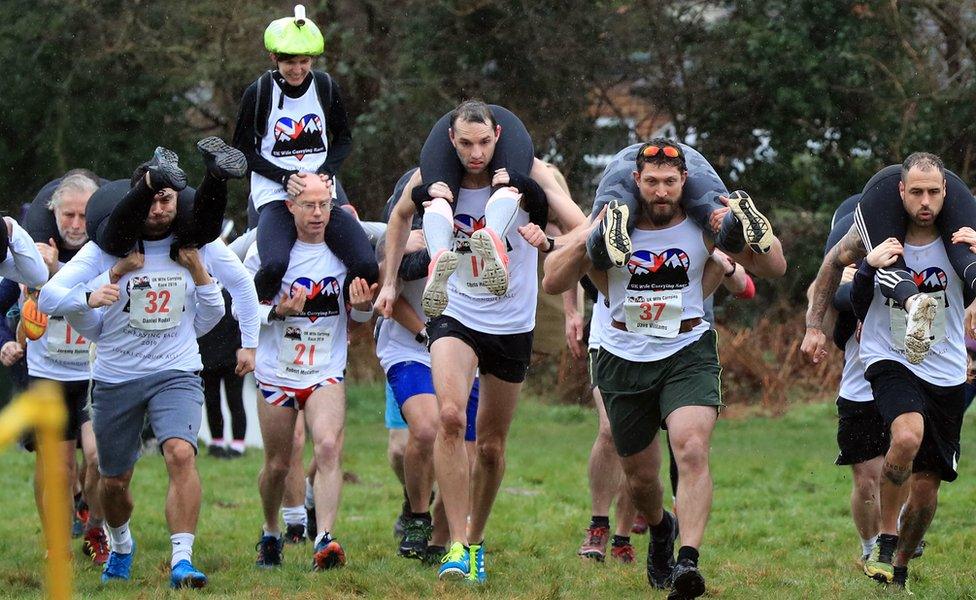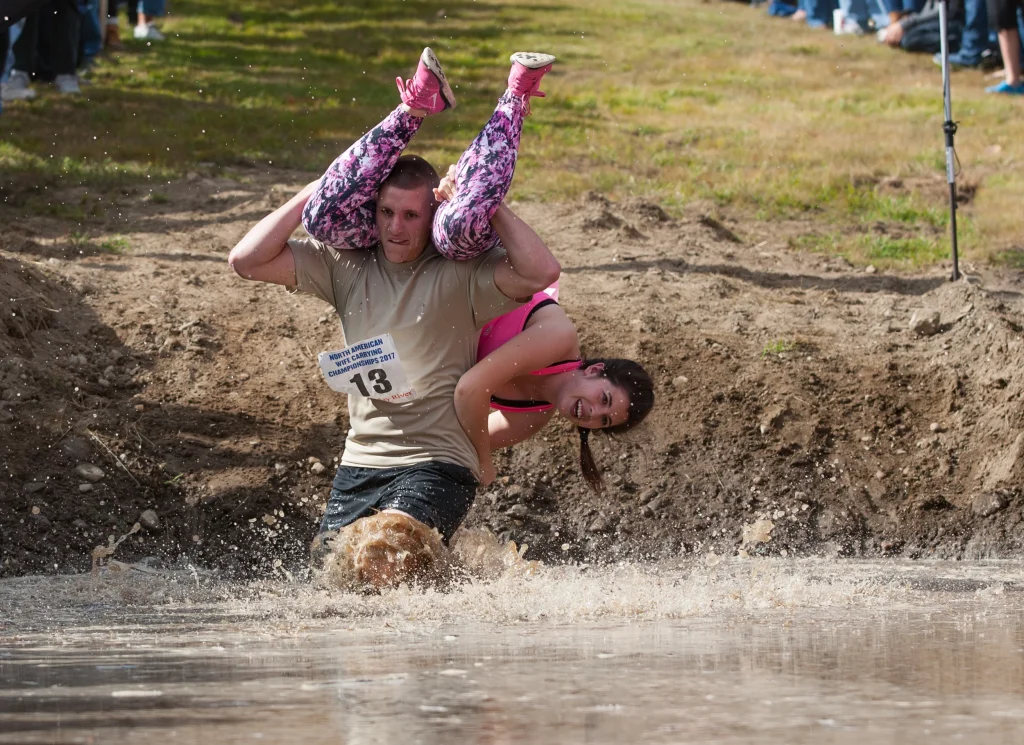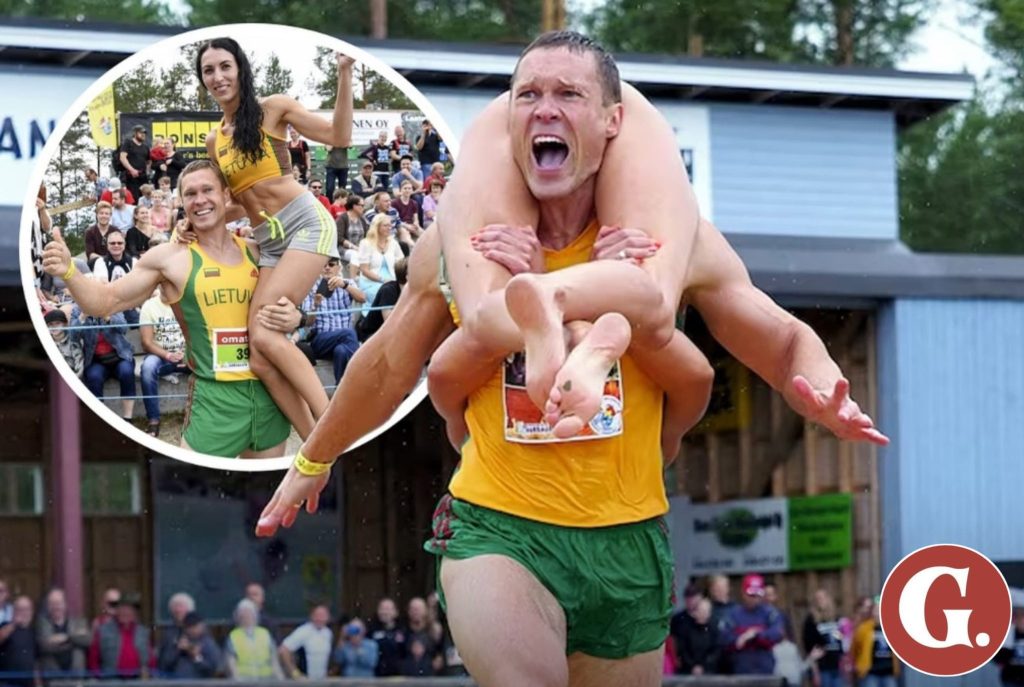In Finland’s Quirky Wife‑Carrying World Championship, Winners Receive Their Partner’s Weight in Beer—and the Race Is Wilder Than It Sounds
Every July, the small town of Sonkajärvi in Finland comes alive with an event that perfectly blends folklore, fun, and fierce competition. The Wife‑Carrying World Championship—known locally as “eukonkanto”—begins as a nod to old bandit legends and has since become a global phenomenon. This festival‑like race attracts hundreds of teams from all over the world, and one thing everyone remembers is the prize: the winners get their wife’s weight in beer. Yes, actual beer.

The tradition is said to spring from the legend of Rosvo‑Ronkainen, a 19th‑century robber who reputedly tested recruits by making them carry sacks full of grain—or sometimes captured women—over forested terrain. Such tales, woven into local lore, eventually inspired the first official competition in 1992. Since then, Sonkajärvi has proudly hosted this annual challenge and turned it into an international spectacle.
The rules are delightfully simple but strict. The course spans exactly 253.5 meters and includes two dry obstacles and a water pit about one meter deep. The woman being carried must be at least 17 years old and weigh a minimum of 49 kilograms. If she doesn’t weigh enough, she must wear a backpack adding extra weight until she reaches the required threshold. Only equipment allowed is a belt for the carrier and a helmet for the rider. Falling off leads to a 15‑second penalty, and no running unless the woman is on her partner’s back.
While the competition is lighthearted, the athletes take it very seriously. Teams often train for months, experimenting with three standard techniques: piggyback carry, over‑the‑shoulder fireman’s carry, or the fan‑favorite Estonian method—where the woman hangs upside down, legs hooked around her partner’s neck, hands gripping his waist. The Estonian technique allows the carrier to use both arms for stability and speed.

Over the years, champions have come mostly from Finland, Estonia, and Lithuania. One standout is Taisto Miettinen of Finland, who first won in 2009 and has earned multiple titles over more than a decade, solidifying his status as a legend in the sport. But in 2025, history was made when American couple Caleb and Justine Roesler broke through to win the championship with a record time of 1:01.17, earning both the title and Justine’s weight in beer—making them the first U.S. world champions.
Despite the absurdity of the name, the sport is celebrated for its camaraderie and its crowd‑pleasing spectacle. From the moment competitors show up, the atmosphere is festive: fans cheer, local vendors sell sausages and beers, and couples dress in costumes ranging from Viking gowns to superhero capes. Special awards recognize creativity, humor, and crowd favorite regardless of finish times.
Recently, Toni and his wife Emilie from the UK decided to take part for fun. Neither had trained, but they traveled to Finland to share the experience and ended up placing eighteenth. For them it wasn’t about gods of strength or serious training—it was about testing themselves, sharing a memorable adventure, and embracing a community that thrives on partnership and laughter.

The media loves this event, and it’s easy to see why. Photos showing upside‑down spouses swinging along wooden obstacles or splashing through water—amid roaring cheers—capture something joyful and unexpected about competitive sport. Still, beneath the humor, there’s ingenuity and athleticism. Even the Guinness World Records lists wife‑carrying as an official sport with its own world title.
This tradition speaks to more than whimsy. It highlights themes that resonate: trust, teamwork, endurance, and respect. The race requires communication—each partner must coordinate balance and pace under pressure. It’s a literal representation of bearing burdens together, loads heavier than yourself, sometimes through mud, water, and chaos.
In Sonkajärvi, the beer prize is more than a quirky gimmick. It’s a symbol of celebration after a hard‑fought race. Winners are weighed on traditional scales after crossing the finish line, and barrels of beer matching that weight are awarded on the spot. For many, it’s a moment of pure joy—sharing toast and laughter under Finnish summer skies.
Beyond Finland, wife‑carrying competitions have popped up worldwide—in Australia, Germany, the United States, the UK, Hong Kong, and more. While local versions may tweak rules slightly, the core spirit remains the same: fun, fandom, and friendly rivalry.
What strikes people most about Sonkajärvi’s event is how it blends rugged sport with lighthearted humor. Running a muddy race while carrying a person on your back doesn’t lend itself to high drama, but the participants’ dedication and audience enthusiasm give it heart. The event showcases strength in a creative, communal way—and in the end, wine or beer or costume aside, it’s a celebration of shared adventure.


